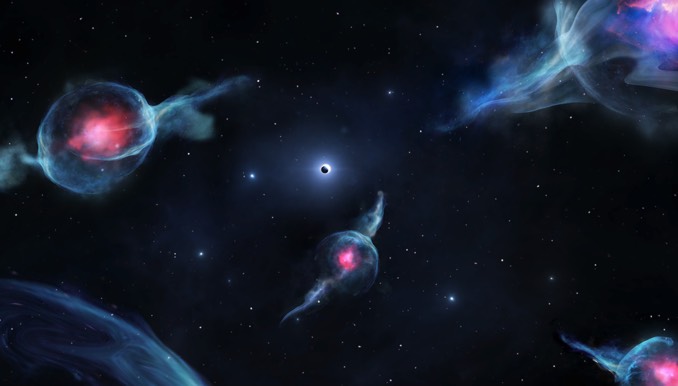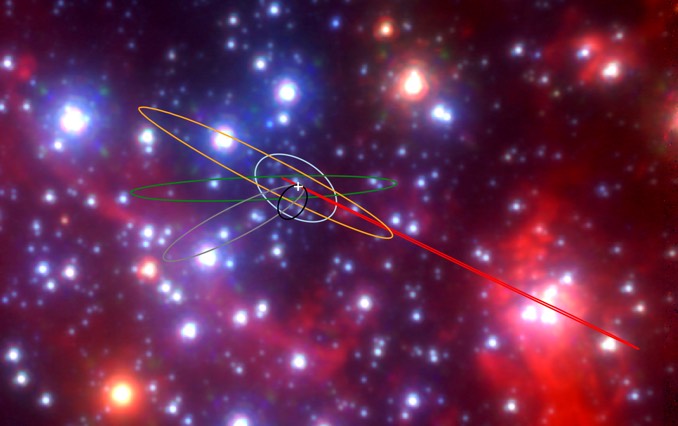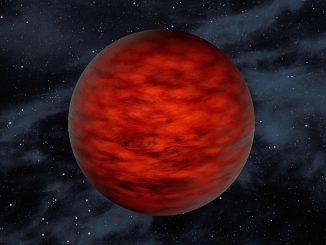
Astronomers already knew about two strange objects orbiting the supermassive black hole at the core of the Milky Way. Now they’ve spotted four more.
“These objects look like gas and behave like stars,” said Andrea Ghez, director of the UCLA Galactic Center Group and co-author of a paper published in the journal Nature.
Ghez and her colleagues discovered the first object, later named G1, in 2005. A second object was identified by German astronomers in 2012 that made a close approach to the Sagittarius A* black hole in 2014.
“At the time of closest approach, G2 had a really strange signature,” Ghez said in a release. “We had seen it before, but it didn’t look too peculiar until it got close to the black hole and became elongated, and much of its gas was torn apart. It went from being a pretty innocuous object when it was far from the black hole to one that was really stretched out and distorted at its closest approach and lost its outer shell, and now it’s getting more compact again.”
Ghez believes G2 most likely is the result of two stars orbiting the black hole that merged into a single large star surrounded by thick clouds of gas and dust.

“One of the things that has gotten everyone excited about the G objects is that the stuff that gets pulled off of them by tidal forces as they sweep by the central black hole must inevitably fall into the black hole,” said co-author Mark Morris, a UCLA professor of physics and astronomy.
“When that happens, it might be able to produce an impressive fireworks show since the material eaten by the black hole will heat up and emit copious radiation before it disappears across the event horizon.”
Now, Ghez and her colleagues have found four more objects they have dubbed G3, G4, G5 and G6. Ghez believes all six are binary stars that merged under the influence of the central black hole’s titanic gravity.
“Black holes may be driving binary stars to merge,” she said. “It’s possible that many of the stars we’ve been watching and not understanding may be the end product of mergers that are calm now. We are learning how galaxies and black holes evolve. The way binary stars interact with each other and with the black hole is very different from how single stars interact with other single stars and with the black hole.”
The astronomers based their conclusions on a re-analysis on 13 years of data collected by the W.M. Keck Observatory.



